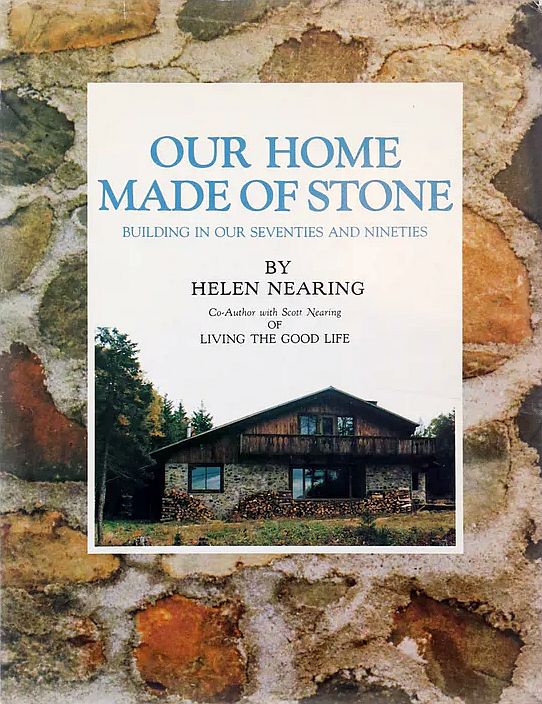
Famous Legacies of Belgrade’s Hidden Homestead

Down a road once taken, through a field once mown, lies a house once lived in — a home filled with children and pets and art and food: food that was farmed on the property, harvested and put by to last a large household through the long, challenging Maine winters.
The house itself is a study in uniqueness. Owner-built in the style of Maine’s legendary back-to-the-land homesteaders, Scott and Helen Nearing, authors of Living the Good Life at Harborside in Brooksville, Maine, the building was constructed by hand of thick fieldstone walls set in cement and intersected by beams in the manner of a European chalet. The centerpiece and a source of heat is a huge fieldstone fireplace and the granite foundation is believed to be from the 1831 Augusta House Hotel.
This Belgrade construction was prompted by the marriage break-up of artist Cecily Diamond, by her desire to homestead the 224-acre share she received in the division of their historic 1800s farm and by the need to have an art studio for herself and to raise her four adopted children. And, as in all Maine fields, there was an abundance of stones available.
Embracing a lifestyle of landscaping the property with gardens and fruit trees, filling two huge freezers and a root cellar with all their own food, raising herding dogs and Scotch Highland cattle and giving her children a life of freedom, Cecily named the road to her property Freedom Road. Although her days were full of creative activities, painting portraits using local models and occasionally offering art classes at her home, Cecily rarely presented her work outside her house/studio.
Cecily’s two younger sons, Nick and Toby, recall this as a happy although sometimes very cold pioneering experience but with always large, healthy, home-cooked meals. When young, the children attended the day school in North Belgrade and later a school on the Plains Road in Readfield where the learning style was adapted to each child’s pace and interests.

Integral to the successful lifestyle on Freedom Road was Cecily’s partner Harold A. “Pal” Tripp Jr. Pal grew up on the Old Belgrade Road with eight siblings and lived and worked in Belgrade all his life, including jobs at Gagne Cement, the Belgrade Transfer Station, and in camp maintenance. He also was an avid gardener and with Cicely had one of Belgrade’s best gardens.
Pal was the one who drove the children to school, went on shopping errands, handled repairs, and patiently was a model for one of Cecily’s most impressive portraits. He also was the beloved uncle of dozens of nephews and nieces and grandrelatives who often visited the Belgrade homestead which they knew well and have many happy memories of times spent there.
The Tripp family is a legend in Maine in regard to the state’s shameful Malaga Island story, where in 1912 a community of black and mixed racial settlers on the island whose occupation went back a century were evicted to make way for a resort. Some of the victims were released on the mainland, some were committed to Pineland institution for the “feeble minded” and some died or disappeared. None of them talked about it.
Pal’s father, Harold Sr., was a young boy at the time of the eviction and although nobody knows what path led him to Belgrade, Pal’s siblings and some of their offspring have returned to Malaga Island (now uninhabited) as respected visitors and have attended the dedication of a monument to Malaga Island at Pineland Cemetery.
With its connections to the Nearings and to the survivors of Malaga Island, what happens to this magnificent Freedom Road property now its visionaries have passed away?
In Cecily Diamond’s case, she left a will that was never notarized and, following years of legal unentanglement, the estate will be for sale — hopefully to a new visionary.
Download Full Newspaper: High Res | Low Res (Details…)
<— Summaries • Next Article —>
©2024 by Summertime in the Belgrades. All rights reserved.